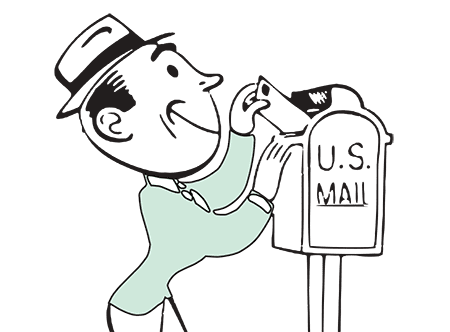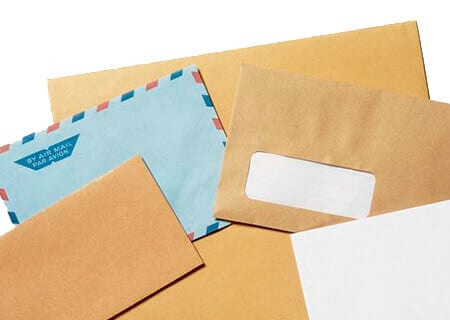To discover why they are called envelopes, we have to travel back to the time before such a thing existed. So, sit back, relax and strap yourself in for a trip in what we call “the way back in time” machine. We will journey back to the dawn of written communications and discover the genesis and evolution of the humble envelope.
Before The Existence of Envelopes
Since the beginning of time, when early man was first learning to communicate with written or drawn symbols, it became necessary to share some messages and also protect other messages from the eyes of those who weren’t meant to see them. A way was needed to deliver the message safely to the intended recipients. This proved difficult. The earliest messages were chiseled on stone or incised into clay tablets which were heavy and cumbersome. Other methods of message delivery included the message being burnt into leather or written on parchment and then rolled into a scroll and sealed with wax. These methods of message delivery varied in degrees of cumbersomeness, being either overly heavy like the stone tablets, or overly fragile, like the scrolls which were easily crushed during travel. The search was on for more efficient methods of writing, sharing, protecting and delivering messages.
First Appearance
Paper came into use by the 17th Century in Europe. And, with the use of paper on the rise, newer more efficient means of message protection and delivery began to appear. Paper was initially quite rare, and expensive enough that only the wealthiest could use it to pass along messages. Messages were written on one side of the paper which was then folded so that the content of the letter was hidden and the delivery instructions could be written on the outside of the paper. With this method, only one piece of paper was used and it became known as a wrapper. Within a short period of time, and as paper became more widely available and less costly, people began writing their messages on a separate sheet of paper and using the wrapper as an envelope. The reason why they are called envelopes is because the wrapper “enveloped” the message…hence the term envelope.
Where did the term envelope originate?
The term “envelope” originated when Europeans began using an extra piece of paper to wrap up letters and send them, and to write delivery instructions on them. It was called a “wrapper,” but became known as an “envelope” because the wrapper “enveloped” the letter.
Making Envelopes
An envelope can be formed from several different sizes and shapes of paper with the most common characteristic being that they are folded into a shape which will envelop something else, whether it’s a personal letter, a bill or marketing materials. An envelope is basically a flat paper container with a sealable flap meant to contain a letter or document. They are usually made from a thin sheet of paper cut into one of three shapes: a cross, a rhombus or a kite shape. These shapes can then be folded, leaving a central rectangular area that will hold the message. After the paper is folded you will have four flaps forming the back of the envelope. These can be sealed together with adhesive or a wax seal. Whatever shape it takes, it envelops the message it was created to contain. Different shapes of envelopes were made to serve different purposes as well. If the last flap to be folded in is along the narrowest side of the paper it is termed a pocket envelope. These are often used as seed packets or herb packets. If the last flap to be folded in is on the longest side of the envelope it is usually known as a business envelope. There are window envelopes, business envelopes, return envelopes, manila envelopes…the list is quite endless. The sizes and shapes of envelopes available today is almost unending but they all serve a similar important purpose.
The Silent Messenger
An envelope, above all else, is a silent messenger. It plays an important and often overlooked role in the world of communications and impacts every aspect of our day-to-day lives. Envelopes bring us news both personal and impersonal, including items that can be, in turn, incredibly important or utterly useless. Until we open the envelope it is often hard to tell which it might be. The reason why they are called envelopes is because they carry with them a sense of mystery. What they hold can either turn the tides of your life or just fill up the recycling bin. The envelope is one of a very few things that has remained fairly unchanged for several hundred years. Even as technology takes over many areas of our lives we still turn to envelopes as a safe and secure way of communicating with the world at large. Whether we are conducting private business, running for office, running a business or running our day-to-day lives, the envelope is a tool that serves many purposes.
Letter Jacket Envelopes makes envelopes that can be customized to whatever use you need. You can choose from an array of colors, shapes and sizes and you are sure to find the right envelope to satisfy your project needs.



